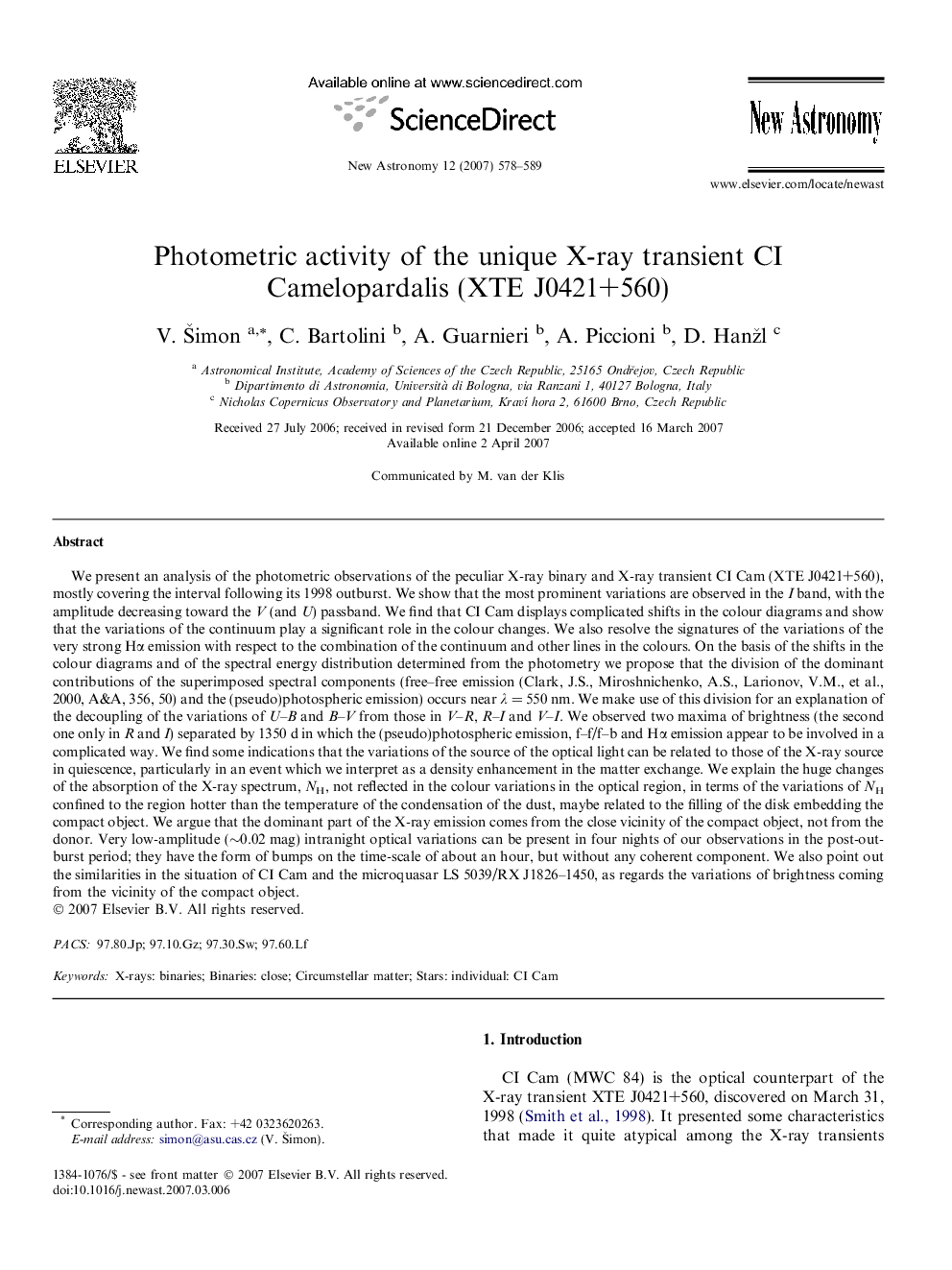| Article ID | Journal | Published Year | Pages | File Type |
|---|---|---|---|---|
| 1779416 | New Astronomy | 2007 | 12 Pages |
Abstract
We present an analysis of the photometric observations of the peculiar X-ray binary and X-ray transient CI Cam (XTE J0421+560), mostly covering the interval following its 1998 outburst. We show that the most prominent variations are observed in the I band, with the amplitude decreasing toward the V (and U) passband. We find that CI Cam displays complicated shifts in the colour diagrams and show that the variations of the continuum play a significant role in the colour changes. We also resolve the signatures of the variations of the very strong Hα emission with respect to the combination of the continuum and other lines in the colours. On the basis of the shifts in the colour diagrams and of the spectral energy distribution determined from the photometry we propose that the division of the dominant contributions of the superimposed spectral components (free-free emission (Clark, J.S., Miroshnichenko, A.S., Larionov, V.M., et al., 2000, A&A, 356, 50) and the (pseudo)photospheric emission) occurs near λ = 550 nm. We make use of this division for an explanation of the decoupling of the variations of U-B and B-V from those in V-R, R-I and V-I. We observed two maxima of brightness (the second one only in R and I) separated by 1350 d in which the (pseudo)photospheric emission, f-f/f-b and Hα emission appear to be involved in a complicated way. We find some indications that the variations of the source of the optical light can be related to those of the X-ray source in quiescence, particularly in an event which we interpret as a density enhancement in the matter exchange. We explain the huge changes of the absorption of the X-ray spectrum, NH, not reflected in the colour variations in the optical region, in terms of the variations of NH confined to the region hotter than the temperature of the condensation of the dust, maybe related to the filling of the disk embedding the compact object. We argue that the dominant part of the X-ray emission comes from the close vicinity of the compact object, not from the donor. Very low-amplitude (â¼0.02 mag) intranight optical variations can be present in four nights of our observations in the post-outburst period; they have the form of bumps on the time-scale of about an hour, but without any coherent component. We also point out the similarities in the situation of CI Cam and the microquasar LS 5039/RX J1826-1450, as regards the variations of brightness coming from the vicinity of the compact object.
Related Topics
Physical Sciences and Engineering
Physics and Astronomy
Astronomy and Astrophysics
Authors
V. Šimon, C. Bartolini, A. Guarnieri, A. Piccioni, D. Hanžl,
